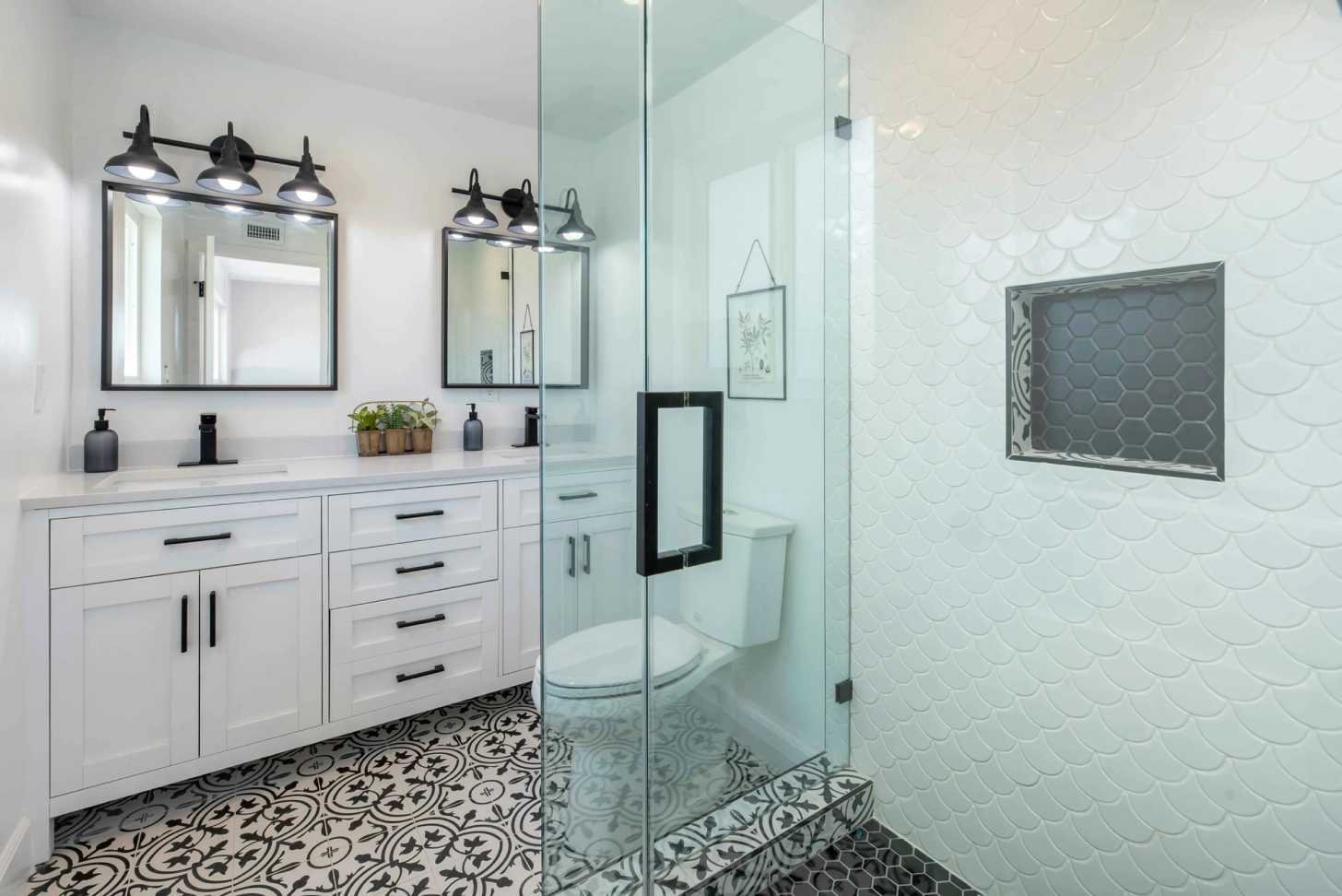Analyzing a bathroom remodel’s return on investment (ROI) is essential for understanding its value. The average ROI for bathroom remodels typically falls between 60% and 70%, depending on project scope and materials used. Key elements that impact ROI include the quality of materials, contractor expertise, local market conditions, and the extent of the remodel. To maximize added value, a bathroom remodeling company should focus on energy-efficient upgrades, quality craftsmanship, a coherent design, ample storage, and enhancing the overall appeal.
Cost Vs. Value Analysis
A cost vs. value analysis is an essential tool in determining the potential return on investment for a bathroom remodel project. This analysis involves evaluating the costs of the renovation against the value it adds to the property. By comparing the initial investment with the expected increase in property value, homeowners can make informed decisions regarding the financial feasibility of their bathroom remodel.
Key components of the cost vs. value analysis include evaluating the project scope, material costs, labor expenses, and potential market value appreciation. Factors such as current real estate market trends, neighborhood comparables, and potential buyers’ preferences in the area must also be taken into account.
Furthermore, analyzing the cost vs. value ratio helps homeowners prioritize renovations with the highest return on investment. This data-driven approach allows for a strategic allocation of resources towards upgrades that enhance the bathroom aesthetically and contribute significantly to the property’s overall value.
Key Factors Impacting ROI
Factors influencing the return on investment (ROI) of a bathroom remodel encompass a range of key considerations that impact the overall financial outcome of the project. One vital factor is the scope of the remodel. A minor update focusing on cosmetic enhancements like new paint or fixtures yields a lower ROI than a full-scale renovation involving structural changes or layout modifications. The quality of materials and finishes chosen also plays a significant role in determining ROI. Opting for high-quality, durable materials might require a more substantial upfront investment but can result in a higher ROI due to increased home value and longevity.
Furthermore, the expertise and reputation of the contractor hired for the remodel can influence ROI. Experienced professionals who deliver quality work within budget and on schedule enhance the overall return on investment. Moreover, local market conditions, such as housing demand and the resale value of homes in the area, can impact the ROI of a bathroom remodel. By carefully considering these key factors, homeowners can maximize the financial benefits of their renovation projects.
Average Return on Investment
The analysis of average return on investment (ROI) for bathroom remodels provides valuable insights into the financial outcomes of such projects. Research indicates that, on average, a bathroom remodel can yield a return on investment ranging from 60% to 70%. For every dollar spent on a bathroom renovation, homeowners can expect to recoup around 60 to 70 cents in increased home value.
Factors that influence the ROI of a bathroom remodel include the scope of the project, the quality of materials used, and the current real estate market conditions. For example, a minor bathroom update focusing on cosmetic changes like new fixtures and paint may have a higher ROI than a major renovation involving structural changes or expansions.
Additionally, the property’s location is essential in determining the ROI of a bathroom remodel. Regions with higher property values and strong housing markets offer better returns on home improvement projects. Analyzing these factors can help homeowners make informed decisions regarding bathroom renovation projects to maximize their ROI.
Tips to Maximize Added Value
Strategic planning and attention to critical details are essential to enhancing the added value of a bathroom remodel. One tip to maximize added value is to focus on energy-efficient upgrades. Installing low-flow toilets, LED lighting, and water-saving faucets appeals to eco-conscious buyers and can lead to long-term cost savings for the homeowner. Another important tip is to prioritize quality materials and craftsmanship. Opting for durable materials like ceramic tiles and high-quality fixtures can increase the perceived value of the space and attract potential buyers.
Moreover, maintaining a coherent design throughout the bathroom is vital. Consistent color schemes, stylish hardware, and harmonious textures create a sense of harmony and sophistication that can significantly impact the overall perceived value of the remodel. Lastly, ample storage solutions such as built-in shelves, cabinets, and vanity organizers can enhance functionality and organization, further adding to the appeal and value of the renovated space. By implementing these tips, homeowners can maximize the added value of their bathroom remodel project.



